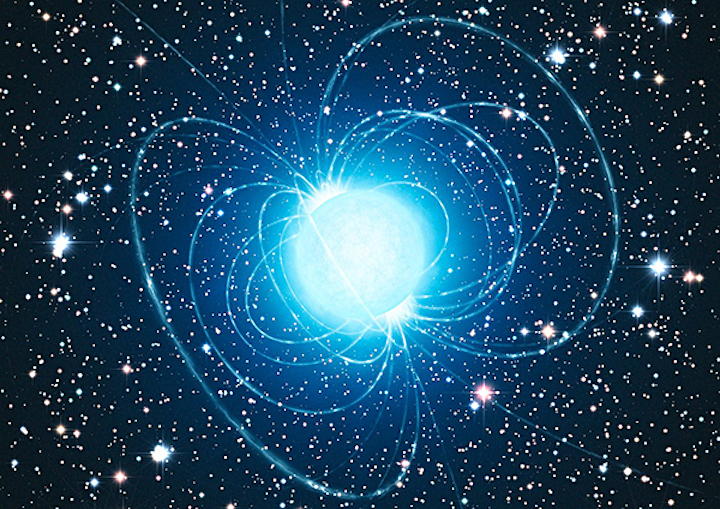27.09.2021

One out of four WDs will end its life permeated by a strong magnetic field. Credit: ESO/L. Calcada.
At least one out of four white dwarfs (WDs) will end its life as a magnetic star, and therefore magnetic fields are an essential component of WD physics. New insights into the magnetism of degenerate stars from a recent analysis of a volume-limited sample of WDs have provided the best evidence obtained so far of how the frequency of magnetism in WDs correlates with age. This could help to explain the origin and evolution of magnetic fields in WDs.
More than 90% of the stars of our Galaxy end their lives as WDs. Although many have a magnetic field, it's still unknown when it appears on the surface, whether it evolves during the cooling phase of the WD and, above all, what are the mechanisms that generate it.
Astronomical observations are frequently subject to strong biases. Because WDs are dying stars, they become cooler, and hence fainter and fainter with time. As a consequence, observations tend to favour the study of the brightest WDs, which are hot and young. There is also a more subtle and counterintuitive effect. Because of their degenerate status, more massive WDs are smaller than less massive ones (imagine a series of spheres where the smaller ones are the heavier). Because smaller WDs are also fainter, observations tend to also favour the less massive stars.
In summary, observations of targets selected according to their brightness (for instance, observing all WDs brighter than a certain magnitude) tend to concentrate on young and less massive stars, totally neglecting older WDs.
Another issue is that most of the observations of WDs are made with spectroscopic techniques which are sensitive only to the strongest magnetic fields, thus failing to identify a substantial fraction of magnetic WDs. The sensitivity of spectropolarimetry to magnetic fields may be more than two orders of mangitude better than spectroscopy. Spectropolarimetry has demonstrated that weak fields, which escape detection via spectroscopic techniques, are actually quite common in WDs.
In order to carry out a complete spectropolarimetric survey, astronomers from Armagh Observatory and the University of Western Ontario selected all the WDs from the Gaia catalogue in a volume within 20 parsecs of the Sun. About two thirds of this sample, or approximately 100 WDs, had not been observed before and hence there were no data available in the literature. Consequently, the team observed them using the ISIS spectrograph and polarimeter on the William Herschel Telescope (WHT), together with similiar instruments on other telescopes.
They found that magnetic fields are rare at the beginning of the life of a WD, when the star no longer produces energy in its interior, and starts its cooling phase. Therefore a magnetic field does not appear to be a characteristic of a WD since its "birth". Most frequently, it is either generated, or brought to the stellar surface during the WD's cooling phase.
They also found that the magnetic fields of WDs do not show obvious signs of Ohmic decay, again an indication that these fields are generated during the cooling phase, or at least continue to emerge at the stellar surface as the WD ages.
This picture is totally different from what is observed for instance in magnetic Ap and Bp stars of the upper main sequence, where it is found that not only are magnetic fields present as soon as the star reaches the zero-age main sequence, but also that the field strength quickly decreases with time. Magnetism in WDs therefore seems to be a totally different phenomenon than magnetism of Ap and Bp stars.
Not only does magnetic field frequency increase with WD age, but it is known that the frequency is correlated with stellar mass, and that fields appear more frequently after the star's carbon-oxygen core has started to crystallise. A dynamo mechanism can explain the weakest fields among those observed in WDs, and recent work suggests that the same mechanism could be capable of producing fields stronger than originally predicted.
For comparison, the strength of the Earth's magnetic field, produced by a dynamo mechanism, is about one Gauss. A dynamo mechanism can explain fields up to 0.1 million Gauss strength, but in WDs fields up to several hundred million Gauss have been observed. Furthermore, a dynamo mechanism needs fast rotation, but this is not generally observed in WDs. Further theoretical and observational investigation is needed to distangle this situation.
Quelle: The Isaac Newton Group of Telescopes (ING)
